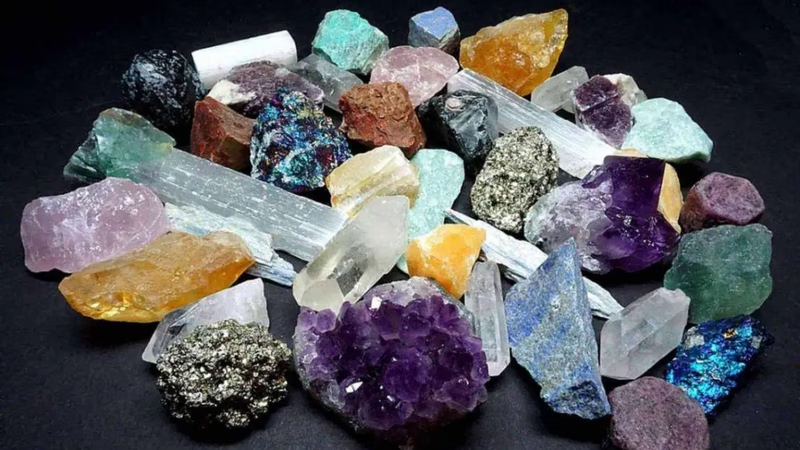
Identifying ore minerals enhances trade quality and market insights.
By being able to identify ore minerals accurately, a minerals merchant can assess the quality of the minerals they are dealing with. They can determine the mineral's grade, purity, and other relevant characteristics that affect its value in the market. This knowledge helps in negotiating fair prices and ensuring the quality of thematerials being bought or sold.Understanding the identification of ore minerals enables a minerals merchant to stay informed about market trends and pricing. They can keep track of the demand and supply dynamics for specific minerals, identify emerging market opportunities, and make informed pricing decisions. This knowledge allows them to capitalize on favorable market conditions and maximize their profit margins.
The ability to accurately identify ore minerals helps in mitigating risks associated with trading. By knowing the specific mineral species, a minerals merchant can assess the potential risks and challenges related to transportation, storage, handling, and market acceptability. This knowledge allows for better risk management strategies and informed decision-making. Having expertise in identifying ore minerals gives a minerals merchant a competitive advantage. They can differentiate themselves by offering specialized knowledge and services to clients. This expertise can attract customers who value accurate mineral identification and trust the merchant's ability to provide high-quality minerals.
The identification of ore minerals involves the application of various techniques and methods to determine the specific mineral species present in an ore deposit. Visual examination involves observing the physical characteristics of the mineral samples, such as color, luster (appearance of the mineral's surface), crystal form, cleavage, and fracture. These visual observations can provide initial clues about the mineral's identity. Several tests can be conducted on a hand specimen to aid in mineral identification. These include: Determining the mineral's hardness using the Mohs scale, which involves scratching the mineral with objects of known hardness.
XRD is a technique used to analyze the crystal structure of minerals. By exposing a mineral sample to X-rays, the resulting diffraction pattern can be used to determine the arrangement of atoms in the crystal lattice. This information is compared to known mineral patterns in databases to identify the mineral species. EMPA is a technique that uses an electron microprobe to determine the chemical composition of minerals. By bombarding the mineral sample with an electron beam, the emitted X-rays can be analyzed to identify the elements present in the mineral. This information can assist in identifying specific ore minerals.
Spectroscopic techniques, such as infrared spectroscopy (IR) and Raman spectroscopy, can provide information about the molecular and structural characteristics of minerals. These techniques can aid in identifying specific mineral species based on their unique spectral signatures. Chemical tests, including acid tests and flame tests, can be conducted to identify specific elements or ions present in a mineral. These tests can help narrow down the possibilities and provide indications of the mineral's identity.
Minerals can be identified by their physical properties, such as hardness, color, appearance (luster) and odor. The most common laboratory method used to identify a mineral is X-ray diffraction (XRD). X-ray diffraction is a technique in which X-ray light is irradiated and observed on a sample and how the light output from the sample bends.
You can identify a minerals by its appearance and other properties. The definition of a mineral is more limited than you might initially think. For example, the glass is made of sand, which is rich in the mineral quartz. But the glass is not a mineral because it is not crystalline. Instead, glass has a random accumulation of molecules. The skill of identifying ore minerals opens up opportunities for value-added services. A minerals merchant can provide additional services such as mineral testing, quality assurance, and certification based on their identification expertise. These services can be valuable to customers who require assurance of the minerals' quality and authenticity.
Rubbing the mineral on an unglazed porcelain plate to observe the color of the mineral's streak. Testing the mineral's magnetic properties using a magnet. Reacting the mineral with acid, such as hydrochloric acid, to identify carbonate minerals that produce an effervescence (bubbling). The use of a polarizing microscope allows for detailed examination of mineral samples. Thin sections or polished sections of the mineral can be analyzed under polarized light to observe optical properties, such as birefringence, pleochroism, and interference colors. These properties can help identify specific mineral species.
With the skill of identifying ore minerals, a minerals merchant can expand their product range. They can diversify their offerings by dealing with a broader range of minerals and mineral products. This expansion allows them to cater to a wider customer base and tap into different market segments. Being knowledgeable about ore mineral identification helps in building stronger relationships with customers. A minerals merchant who can provide accurate information about the minerals they are selling gains credibility and trust. This fosters long-term relationships with customers who rely on the merchant's expertise and value their advice.
-
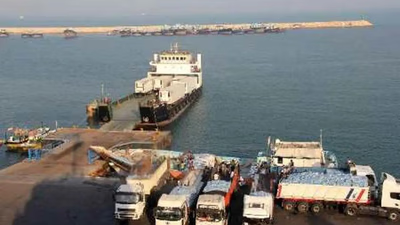
The Middle East is a significant player in the global mineral trade, primarily due to its vast oil and gas reserves. Countries like Saudi Arabia, Iran, Iraq, Kuwait, and the UAE dominate this sector, with oil and gas extraction being crucial. The region also has rich bauxite deposits, particularly in Iran and Saudi Arabia, which are essential for aluminum production. Additionally, phosphate rock deposits in Morocco, Jordan, and Saudi Arabia contribute to fertilizer manufacturing, supporting agriculture. The trade of precious metals and gemstones, including gold and turquoise, enhances the luxury goods market. Industrial minerals such as gypsum, limestone, and silica are vital for construction and manufacturing industries. The Middle East is recognized as the largest producer of minerals globally, with over 60 types extracted from numerous mines. The mineral export market is lucrative, with exports valued in the hundreds of billions, driven by both metallic and non-metallic materials.
Key minerals include copper, iron ore, and chromium, with rising export duties impacting trade dynamics. The region"s iron ore, essential for steel production, is complemented by imports from Brazil, Australia, and Ukraine. Copper mining and smelting operations are active in Iran, Turkey, and Oman, meeting both local and international demands. The macroeconomic policies of Middle Eastern countries aim to boost mineral exports to reach a trillion dollars, showcasing the sector"s importance to the regional economy.
-
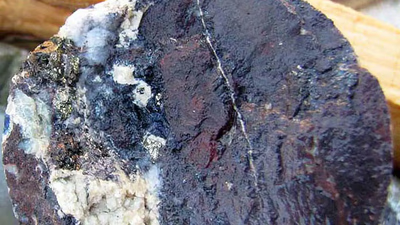
Mineral ores are valuable due to their mineral or metal content, influenced by market demand, extraction costs, and processing feasibility. Ores vary in concentration, from low-grade to high-grade, impacting their economic viability. Key characteristics of minerals include being solid, having a crystalline structure, occurring naturally, and possessing a specific chemical composition. The accessibility of ore deposits, determined by factors like depth and location, affects mining feasibility. Minerals exhibit various physical properties such as color, streak, diaphaneity, density, cleavage, fracture, and hardness, which are essential for identification. Geological processes shape ore formation, with deposits varying in size and shape, influencing extraction methods. The ore grade indicates the concentration of valuable minerals, with higher grades being more economically favorable. Understanding these characteristics is crucial for stakeholders in the Middle East trade platform and B2B marketplace Asia, as they navigate commodity trade and supply chain solutions.
-

Accurate identification of ore minerals is crucial for minerals merchants, enabling them to assess quality, grade, and purity, which directly impacts market value. This expertise allows merchants to negotiate fair prices and stay informed about market trends and pricing dynamics. By understanding demand and supply, they can identify emerging opportunities and make informed pricing decisions, maximizing profit margins. Additionally, knowledge of mineral identification mitigates risks associated with trading, including transportation and storage challenges. Merchants can differentiate themselves by offering specialized services, attracting clients who prioritize accurate mineral identification. Various techniques, such as visual examination, X-ray diffraction (XRD), and chemical tests, are employed to determine mineral species. These methods provide insights into physical properties, chemical composition, and unique spectral signatures. The ability to identify minerals also opens avenues for value-added services like testing and certification, enhancing customer trust and relationships. Furthermore, merchants can expand their product range and cater to diverse market segments, ultimately fostering long-term partnerships with clients who value expertise in mineral quality and authenticity.
-
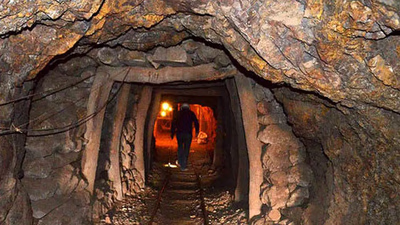
The Middle East, particularly West Asia, is rich in various mineral resources essential for global industries. Key minerals include bauxite, which is the primary source of aluminum, with significant deposits in Iran, Saudi Arabia, and Turkey. Phosphate rock, crucial for fertilizers, is abundant in Jordan, making it one of the largest exporters globally. Copper ore, primarily sourced from Iran, Turkey, and Oman, supports construction and electronics industries. Hematite, the main iron ore, is also found in these countries, vital for steel production. While the region has limited coal resources, small deposits exist in Turkey and Iran. Other minerals like chalcopyrite, chromite, and sphalerite are present but not as prominent. The importance of quality assurance in mineral exports cannot be overstated, as customers often require detailed analyses of shipments.
Exporters must identify reliable suppliers and provide competitive pricing based on quality assessments. This focus on quality and compliance with customer specifications is crucial for maintaining a good reputation in the trade.
-
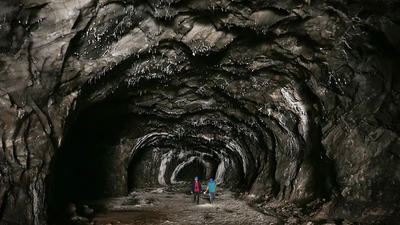
Mineral ores are naturally occurring rocks or sediments containing valuable minerals or elements that can be extracted for various industrial purposes. Formed through geological processes over millions of years, these ores are characterized by their economic value and the concentration of minerals. They serve as primary sources for extracting metals like iron, copper, and gold, as well as non-metallic minerals used in agriculture and energy production. The Earth"s crust comprises over 4000 minerals, with a significant portion made up of eight key elements. Extraction involves mining, crushing, grinding, and refining to separate desired minerals from waste material. The evaluation of mineral ores is crucial in geology and mining, with experts assessing factors such as mineral composition and economic viability to determine the feasibility of mining operations. Understanding the characteristics and processes related to mineral ores is essential for businesses engaged in the Middle East trade platform and B2B marketplaces in Asia, facilitating effective supply chain solutions and regional product listings."





